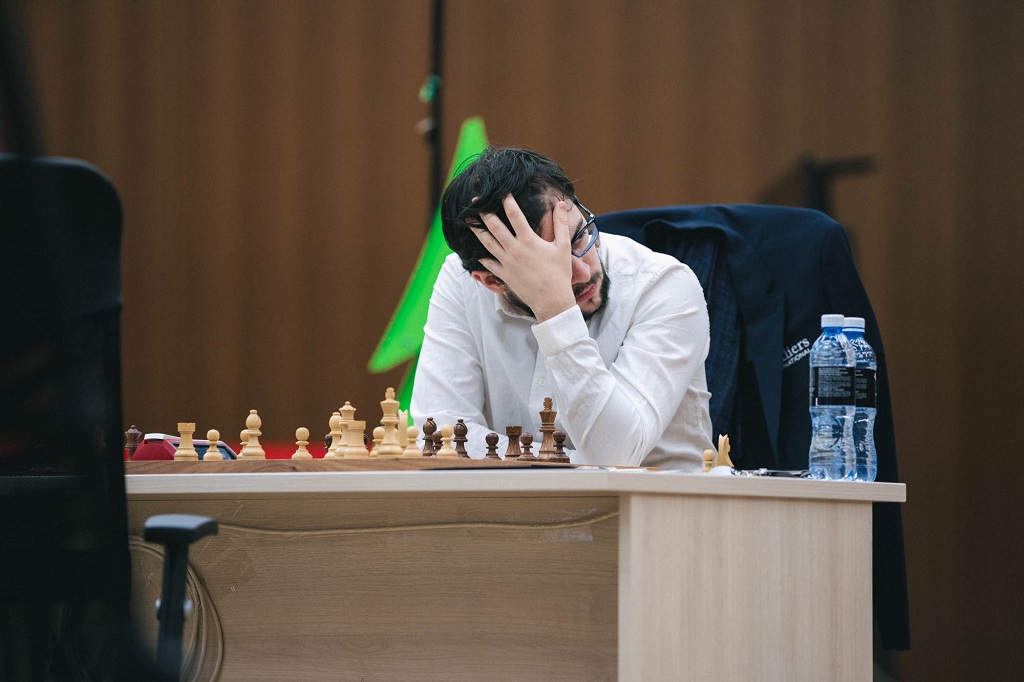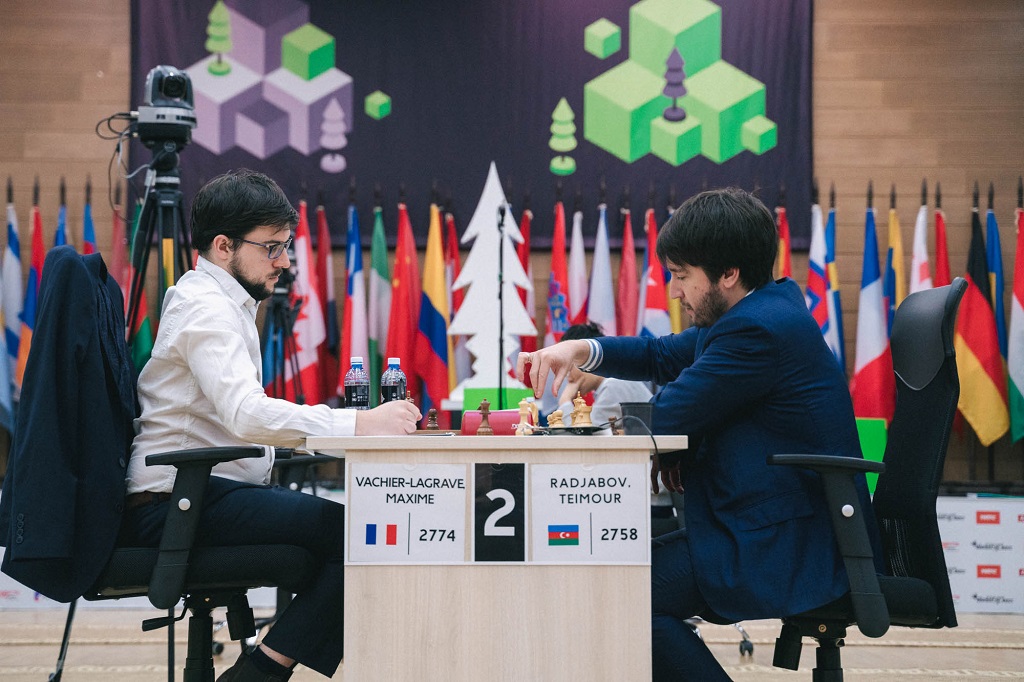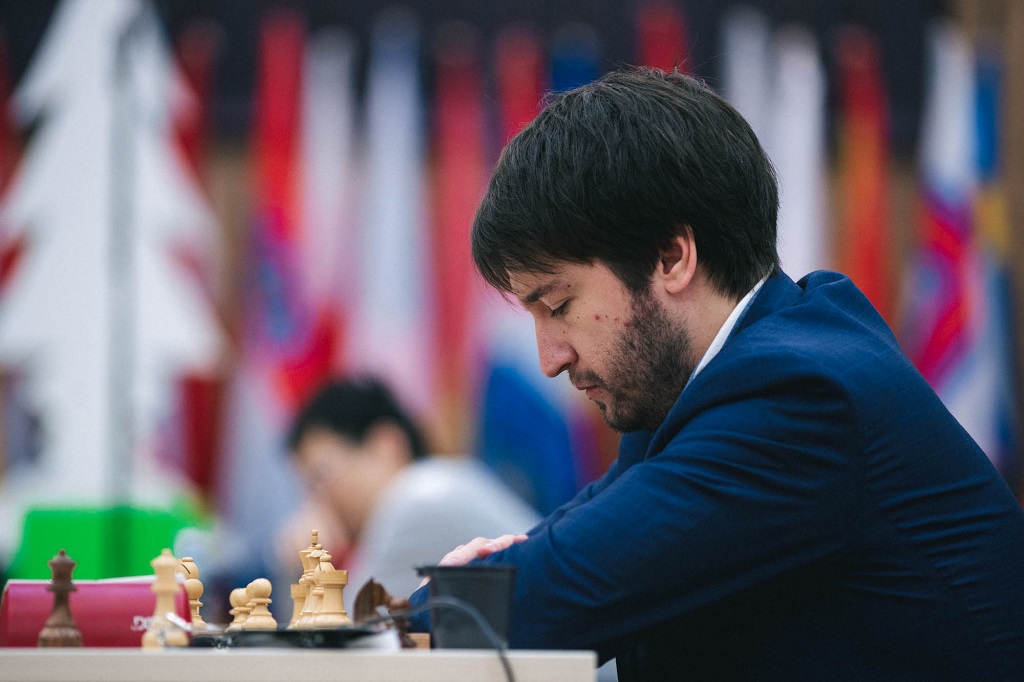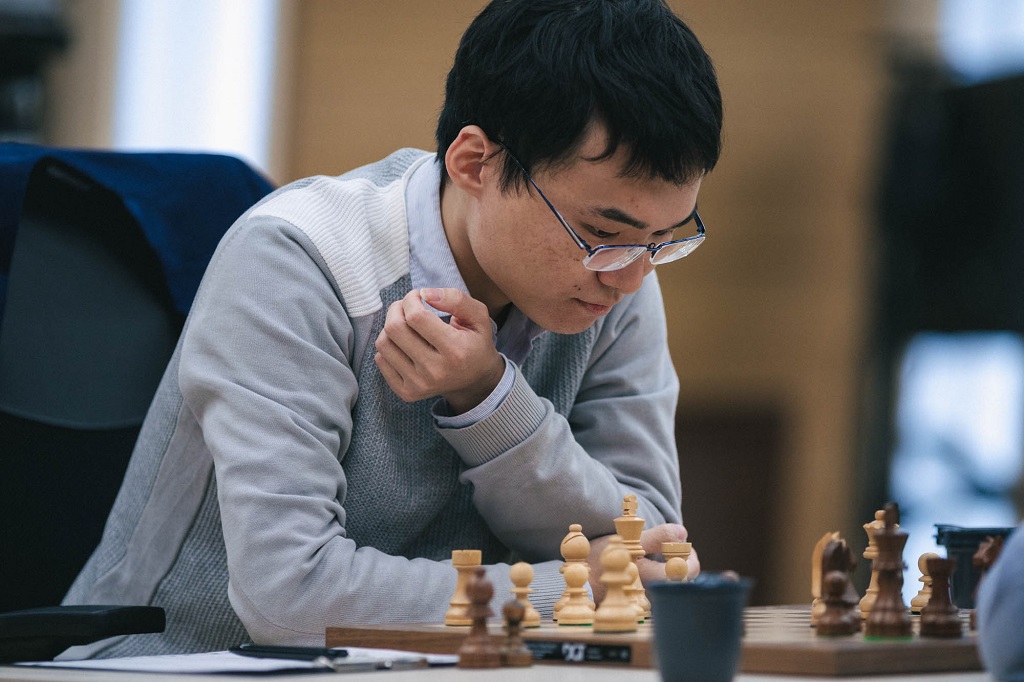


 The FIDE World Cup is taking place in Khanty-Mansiysk. It is a seven-round knock-out event for 128 players, with a total prize fund of US$ 1.6 million and a first prize of US$ 110,000. The matches consist of two classical games with a time control of 90 minutes for 40 moves plus 30 minutes for the rest of the game, with an increment of 30 seconds per move. The finals consist of four classical games. Full schedule.
The FIDE World Cup is taking place in Khanty-Mansiysk. It is a seven-round knock-out event for 128 players, with a total prize fund of US$ 1.6 million and a first prize of US$ 110,000. The matches consist of two classical games with a time control of 90 minutes for 40 moves plus 30 minutes for the rest of the game, with an increment of 30 seconds per move. The finals consist of four classical games. Full schedule.
The hardships associated with playing chess at the highest level must be excruciating. At least that is what we can deduce from the attitudes shown by players like Veselin Topalov, Vladimir Kramnik or Teimour Radjabov. The latter has now got a spot in the all-important Candidates Tournament despite having been considering retirement for over half a decade. The turning point for the Azeri was precisely his disappointing performance at the 2013 London Candidates.
Generally forthright during his interviews, Radjabov explained to Eteri Kublashvili the degree to which tiredness has an effect on players' psychology at such a gruelling event:
This kind of exhaustion that comes here at some stage is like, you know, you try to finish it as soon as possible. Every game is like Armageddon for me after that. [...] It's [in] this stage of exhaustion that you want to try to attack, you know, sacrifice everything, and just finish the tournament — if you win it's nice, but if you lose you say 'it's fine, I don't have to be tortured any more'.
Later on, he even questioned whether he will accept to play in the Candidates, although he surely was happy to get the invitation, as "[being invited] to a nice party is always good".
The other side of the story has more of a lamentable connotation, as Maxime Vachier-Lagrave — an active, consistently strong player — fell just short of qualifying to his first Candidates. France's number one was inches away from reaching the eight-player prelude to the World Championship match two years ago, but could not get his spot in the end.
Many opportunities lie ahead for 'MVL' though, as he still has good chances to finish first or second in the Grand Prix — he was the runner-up in Riga and will play both in Hamburg and Tel Aviv. Apparently, he has not confirmed his participation at the Grand Swiss in Isle of Man, but that is another event in which he could procure the coveted ticket. Furthermore, he meets all the criteria to get the wildcard spot:
This player must participate in at least two of the three qualifying tournaments (World Cup, Grand Swiss and Grand Prix), and be either the highest non-qualifier in the World Cup, Grand Swiss or Grand Prix, or in the top 10 by average rating from February 2019 to January 2020.
Winning the match for third place against either Ding Liren or Yu Yangyi will go a long way in getting the organizer's invitation, while he currently has the third highest average rating of all eligible players, behind Ding and Anish Giri.

It has been an exhausting stay in Khanty-Mansiysk — Maxime Vachier-Lagrave facing Teimour Radjabov | Photo: FIDE
Vachier-Lagrave said good-bye to the event not with a bang but with a whimper. He repeated a line he had used three times this year, drawing twice and losing against Wesley So at the Abidjan Grand Chess Tour event. Unlike his previous rivals, Radjabov developed his light-squared bishop to d3 though, hinting at a potential direct attack against the kingside. Nonetheless, Vachier-Lagrave castled into trouble a couple of moves later:
After 10...0-0 White immediately opened up the b1-h7 diagonal with 11.e5, already putting Black on the back foot. Instead of castling, Vachier-Lagrave could have opted for 10...♝c6 or 10...h6, keeping his options open. The game continued 11...♝c6 12.♘g5 h6 and White made use of a simple manoeuvre to have his rival constantly vigilant to the mating threats:
With 13.♗h7+ Radjabov forced his opponent to leave his king on h8, and any invasion through the h-file or the aforementioned diagonal will be lethal. After 13...♚h8 14.♗c2 Vachier-Lagrave needed to deal with the threat of Qd3 and opted for 14...c4 instead of 14...g6 — undoubtedly, the Frenchman did not foresee finding himself in such a miserable position so early in this critical game.

Radjabov could not believe how good his position was out of the opening | Photo: FIDE
A couple of moves later, Vachier-Lagrave rejected the idea of painstakingly defending an inferior endgame:
Black had a chance to force the issue with 21...♛xg2 22.♕xg2 ♝xg2, but instead chose to keep the queens on the board by playing 21...♞d7. A series of exchanges followed and White was left a pawn to the good in a position with opposite-coloured bishops in which Radjabov had the more active pieces and a clearer target on g7.
The Azeri later declared that he knew he was winning by that time, and showed proficiency in the conversion of his advantage. The game finished after an unrecognizable Vachier-Lagrave blundered a whole rook:
There followed 44...♜f5 45.♕xf5, and Black resigned.
Long before Radjabov qualified to the final, Yu Yangyi and Ding Liren had settled the classical phase of their match-up. Yu had the white pieces and played the same line he had used in his classical encounter against Nikita Vitiugov in the quarter-finals. Ding improved on the Russian's play on move 18:
Vitiugov's 18...♝d5 led to a 40-move draw, while Ding's 18...♜d5 brought about a quicker peaceful agreement. Given the amount of time he spent, China's number one was most likely within his preparation when he started checking White's king repeatedly on move 26.
The Chinese duel will be decided on Saturday's tiebreaks. Although Ding is the favourite, Yu Yangyi is no slouch when it comes to rapid and blitz, as he showed this year both in Norway and in Saint Louis. An exciting quick-play match-up awaits us.

Yu Yangyi is the eighth highest-rated player in the world in blitz | Photo: FIDE
GM Yannick Pelletier reviewed the highlights of the day's action
Commentary by IM Anna Rudolf and GM Evgeny Miroshnichenko